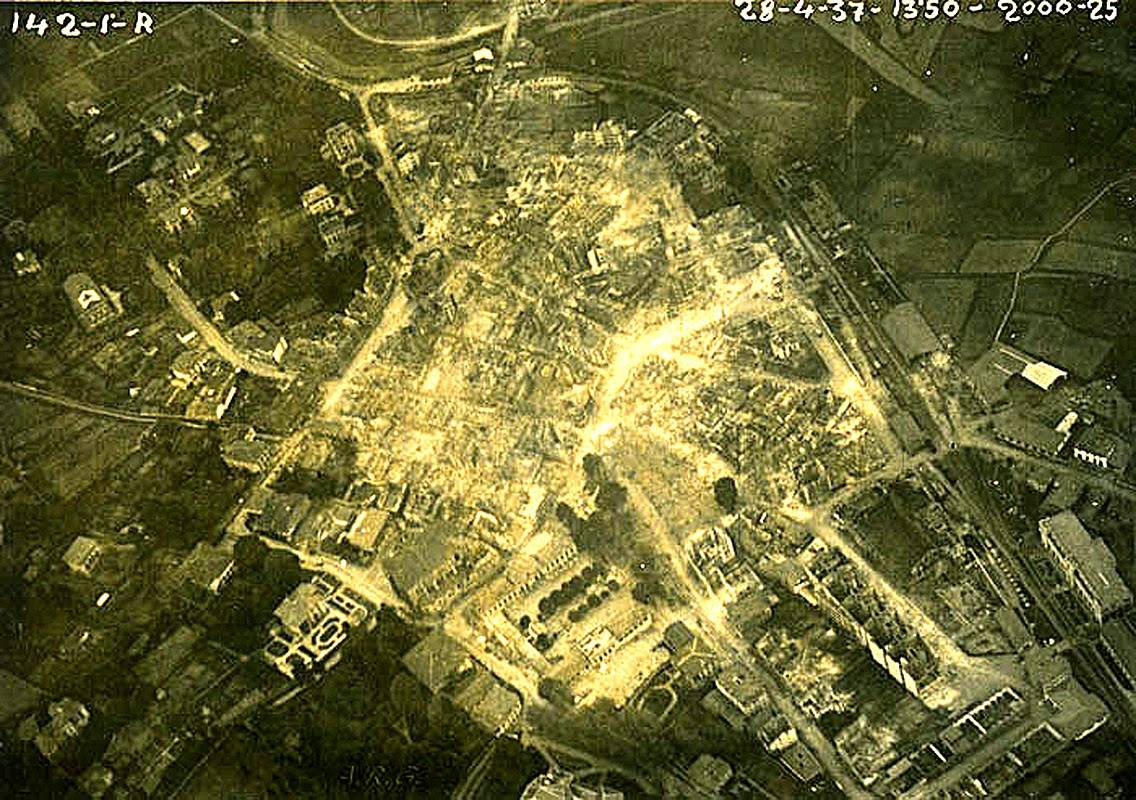This article was translated by John R. Bopp
Thanks to an article by Alonso Cueto in the Peruvian daily La República, we’ve discovered an analysis published in The New York Review of Books, penned by John Richardson, about a book by historian Xabier de Irujo, “Gernika 1937: The Market Day Massacre”.
You don’t have to look very hard in this blog to realize that the Bombing of Guernica is a very important topic to us. Xabier de Irujo is a historian who has worked very hard to remove from this part of history all the lies that have tried to cover this event up from day one, lies whose only goal has been to play down the consequences of the bombing and its victims.
That’s why, when we found out about the publication of such an extensive article about the book, we were overjoyed. The New York Review of Books is a prestigious publication that is influential not only in the US, but also in many other English-speaking countries.
All this joy turned into disappointment and frustration, however, as we finished reading the article. Really, when we reached the end, we felt like we were in the joke about the fly and the cow.
In summary, this joke is about a student who shows up to a biology exam having studied only about flies. When the teacher asks him about the cow, the student looks at him, thinks a bit, and then answers, “The cow is a mammal, with four legs. We can point out that it has horns on its head and a large tail at the end. The tail’s main purpose is to scare away flies. By the way, flies are insects in the order Diptera that…” followed by a 10-minute explanation about the only thing he knew, flies.
John Richardson reminded us of that student, except that his analysis of Irujo’s book was not part of an exam, nor was it written by a student. He’s asked to write an article about a book analyzing the Bombing of Guernica, and he dedicates only 10% of his lengthy article to that book and its content. The rest is about Picasso and his painting, almost as if the bombing itself were a minor, if bloody, accident, when compared with Picasso’s work, the story of which is well known and has been told many times.
He may even think this way. There are people who defend the idea that only suffering is able to open the door to the greatest artistic and cultural works of humanity. He may even think that the more than 1,500 deaths and the flattened city is a “small price” to pay so that humanity can enjoy a work like Picasso’s. But this was not the time to discuss that.
What he should have discussed was the book by this Basque researcher, published by an American university, that discusses the tragedy brought about by the Germans and Italians at the service of the Spanish insurgents upon the city of Guernica; a tragedy that is a part of an even greater tragedy that was wrought during the Spanish Civil War and which ended in a fascist dictatorship that managed to survive until the death of its leader in the mid-’70s thanks in no small part to democratic governments like that of the US.
In 2016, no one can doubt the importance of Picasso’s masterpiece. But that doesn’t mean that we need to discuss flies and not cows in an article printed by a medium as serious and prestigious as the New York Review of Books.
Personally, the publication of this article a mere fortnight after the commemoration of the 79th anniversary of the massacre caused by this war crime seems to enter into insensitive territory, if not an outright insult to the victims. And that doesn’t even begin to bring us to the topic that if one doesn’t know much about the cows, he should leave it better to someone who does, regardless of how much you know about and are interested by the flies.
The New York Review of Books – 16/5/2016 – USA
A Different Guernica
In Gernika, 1937: The Market Day Massacre, the historian Xabier Irujo reveals the hitherto unknown fact that the destruction of the historic Basque town of Guernica was planned by Nazi minister Hermann Göring as a gift for Hitler’s birthday, April 20. Guernica, the parliamentary seat of Biscay province, had not as yet been dragged into the Spanish civil war and was without defenses. Logistical problems delayed Göring’s master plan. As a result, Hitler’s birthday treat had to be postponed until April 26.
(Continue) (Automatic translation)
Last Updated on Dec 20, 2020 by About Basque Country





























